Event date: Monday 23rd November 2015
Speaker: Fergus Garrett
Write-up by Tony Ewin
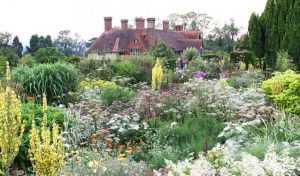
© greatdixter.co.uk
Fergus Garrett is the Head Gardener at Great Dixter (www.greatdixter.co.uk), the garden made famous by Christopher Lloyd, author of The Well Tempered Garden and many other books. The garden is near Northiam in East Sussex and is ten miles from the sea. The rainfall is thirty inches a year.
The estate was bought in 1910 by Nathaniel and Daisy Lloyd and contained a beautiful Wealden yeoman’s house and hall of circa 1460. None other than Edwin Lutyens was brought in to restore the house, including importing another period building to add to the house as the master suite. The restoration is so sympathetic that it is difficult to tell which is the original and which is not. Christopher Lloyd was born in the house and lived there for his whole life. He died in 2006. The house is now used as accommodation by students at the garden. Fergus became head gardener in 1992 and collaborated closely with Christopher Lloyd.
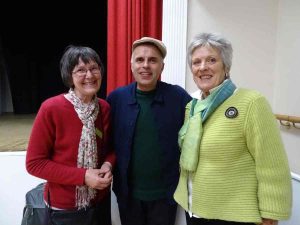
The garden of six acres was designed by Lutyens who made a series of “rooms” incorporating the barns and other farm buildings into the infrastructure. The house sits in the middle of the garden, so that the views are mostly inward looking. The garden has many typical Lutyens features such as circular steps. Yew hedges were planted; some were clipped into crenellations. Yew topiary was used and four peacocks adorn the upper garden. The garden has a wonderful bone structure and a lovely feeling of age.
Into this bone structure the planting is uninhibited, an attitude shared by both Lloyd and Garrett. No rules of colour. Anything could be tried to see what the effect was. There would be bold and vibrant combinations. But this seeming anarchy in fact masked a heightened sensibility and discrimination, and this sense of taste was what Fergus was trying to convey in his lecture.
The first unconventional feature is the meadow leading to the front door which includes wild orchids and 180 species of spider. This is a handshake with the wild as the countryside sweeps into the garden. There is an enticing path through the meadow. But there is a mown edge to the meadow to keep the wilderness at bay.
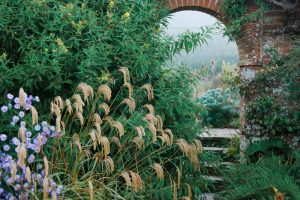
© greatdixter.co.uk
The terraces and paving are alive with self-sown plants such as the Mexican daisy Erigeron karvinskianus. But these areas are heavily managed to prevent them getting out of control. In fact self-sown seedlings are allowed throughout the garden, until they get too much and then they are ruthlessly “edited”. There is a physical and visual battle with self-sowers. The theme is studied informality. Planting is done in such a way as to imitate self-sowers and to create an intimate combination.
The most important element is contrast. A garden without contrast is a garden without interest. You should make your eyes work to appreciate contrast. Contrast is not limited to colour but includes form and texture. There should be undulations as in the Long Border, not everything the same height. There should be punctuation marks such as the Golden King holly in the Long Border. Verbascums are used as exclamation marks throughout the garden. In fact a stock bed becomes a Verbascum wonderland. The tallest effect is made with the giant fennel Ferula communis ssp glauca which rises up to 3 metres and is seen dramatically against the sky.
In the exotic garden there is a variety of leaf patterns and textures as well as different shades of green: bananas, Tetrapanax papyrifera, Begonia luxurians, Arundo donax. Fergus suggested to a photographer to lie on the ground and point the camera skywards. Is this a new angle we should adopt in our own gardens from time to time ?
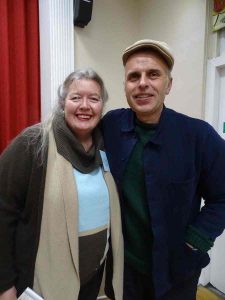
In contrast to all the emphasis on contrast, Fergus does use softening effects. An example is the Long Border early in the season; later it is taken over by bright vibrant colours. The planting often had several layers so that as the summer went on different combinations would emerge. That meant that attention had to be paid to allowing enough space for plants to develop.
Fergus carried on Christopher Lloyd’s use of bold experiments. One year he decided that the frothy texture of cow parsley was so delightful that he floated it through a “room” and around the topiary and even into the Long Border. Needless to say it had to be removed as soon as it stopped flowering.
Fergus admitted to his aberrations: there have been mistakes, combinations that did not work. However, he did not accept that his decision to bring cow parsley into several parts of the garden was a mistake, merely an experiment. Interestingly, he did not call it Queen Anne’s Lace, which sounds so much more alluring than cow parsley and might be thought to be a justification. My own comment would be that cow parsley is rampant enough in our own wild flower meadow; the idea of introducing it into a formal garden would be a kind of self-flagellation. But Fergus thought his cow parsley moment with the white foam permeating the garden was worthwhile.
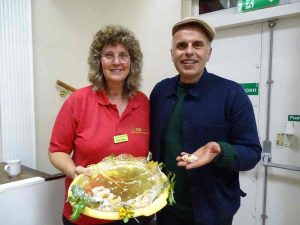
The collection of pots by the front door was a place to experiment with different combinations and this is where Fergus often sets his students an exercise in composition.
Fergus Garrett was a bundle of energy: a torrent of words describing his methods at Great Dixter. Noting that it was impossible to please everybody so you might as well please yourself, he concluded by saying that he and his team had great respect for the past but were also concerned to look to the future.
Footnotes:
- If you would like a list of the plants Fergus mentioned please let me know and I shall e-mail it to you. My e-mail address is tony.ewin@gmail.com
- If you are interested in finding more about Christopher Lloyd himself then I would recommend Stephen Anderton’s biography Christopher Lloyd: His life at Great Dixter (Chatto &Windus 2010).
